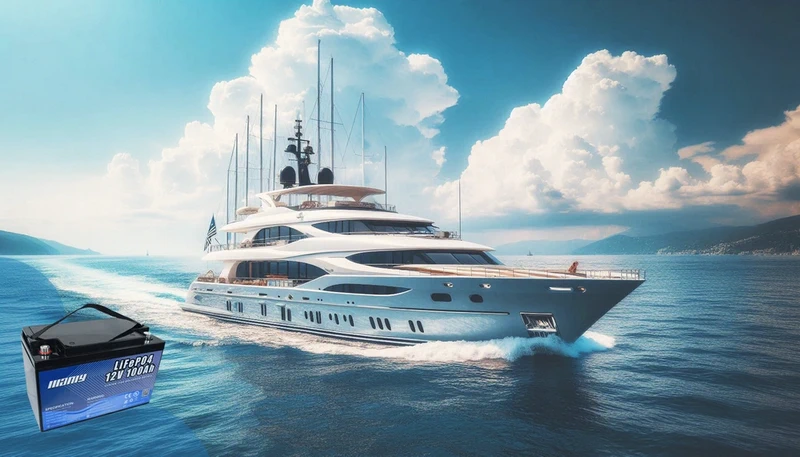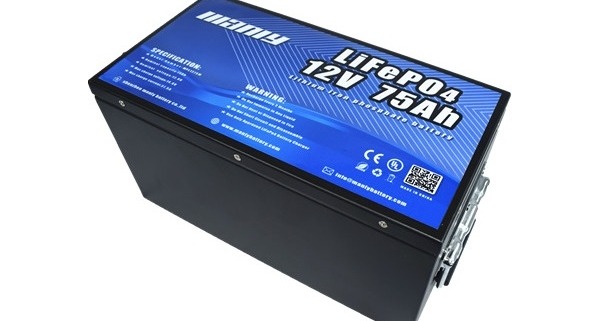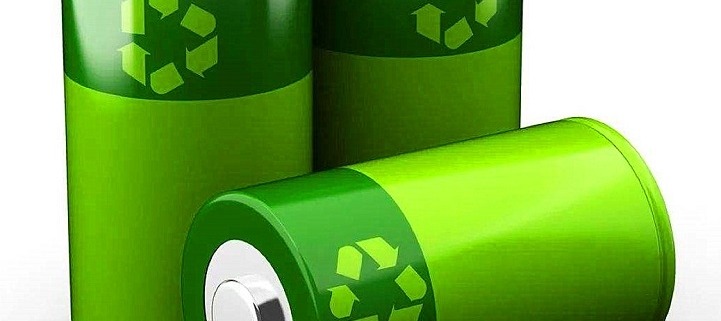Charge a Marine Battery: Step-by-Step Guide
Table of Contents
- Charge a Marine Battery: Step-by-Step Guide
- Understanding Marine Batteries
- Preparing to Charge Your Marine Battery
- Step-by-Step Guide: How to charge a marine battery
- Best Practices for Marine Battery Maintenance
- Conclusion
- FAQ
- Hot Resarch
- Con Edison Development plans to deploy a 2GW battery energy storage project in California
- The influence of low temperature on lithium iron phosphate battery
- Lithium battery storage
Marine batteries are the lifeblood of any boat—they power your engine, lights, gauges, and all the essential onboard electronics. Without a healthy battery, your boat is a pretty shell on the water. In this article, we dive into the burning question: how do I charge a marine battery? We’ll explore everything from the ins and outs of battery types to a step-by-step guide on charging. Plus, we’ll compare the advantages of a marine li ion battery with those of traditional marine deep cycle batteries. Let’s get started on this exciting journey to keep your boat powered and your adventures safe!
Understanding Marine Batteries
1. Types of Marine Batteries
Not all marine batteries are created equal. When it comes to powering your boat, you typically have three choices:
- Starting Batteries: These provide that quick, powerful burst of energy to get your engine running, but they’re not built for long-term power.
- Deep Cycle Batteries: Designed for sustained power delivery, these batteries keep your lights, electronics, and other accessories humming for hours.
- Dual-Purpose Batteries: These offer a blend of starting and deep cycle capabilities, which can be handy on smaller vessels with limited space.
Most boaters prefer marine deep-cycle batteries for extended use and reliability. These batteries handle deep discharges better, ensuring their boats stay powered even during extended trips.
2. Battery Chemistry and Technology
Battery chemistry plays a pivotal role in performance and longevity. Traditional chemistries—like lead-acid, AGM, and gel—have long been the go-to options. However, a modern contender is changing the game: the marine li ion battery.
Why choose a marine li ion battery? Because it’s lightweight, lasts significantly longer, and requires minimal maintenance compared to conventional batteries. Think of it as upgrading from an old clunker to an award-winning sports car in the world of batteries. This cutting-edge technology improves performance and enhances safety and efficiency, making it a popular choice among serious boaters.
Learn more about lithium-ion battery technology on Wikipedia.
Preparing to Charge Your Marine Battery
Before you begin the charging process, a little preparation goes a long way toward ensuring safety and efficiency.
1. Assessing Your Battery’s Condition and Type
First, give your battery a thorough once-over. Check its age, inspect for any signs of corrosion, and verify the battery type. Understanding whether you’re dealing with a marine li ion battery or deep cycle batteries is crucial—it influences which charger to use and how you’ll maintain it. A well-maintained battery lasts longer and performs better when you charge a marine battery.
2. Choosing the Right Charger
Next up is selecting the correct charger. You generally have two main options:
- Onboard Chargers: Permanently installed on your boat, these chargers make it super convenient to power up as long as you have access to a standard outlet.
- Portable Chargers: These allow you to charge your battery wherever you are, which is ideal for smaller boats or when space is at a premium.
Make sure the charger you choose matches your battery’s chemistry and voltage. This step is especially important for those opting for a marine li ion battery or deep cycle batteries—using the wrong charger can lead to underperformance or even damage.
3. Safety Precautions Before Charging
Safety should always be your top priority. Here are some key precautions:
- Work in a Safe Environment: Charge your battery in a well-ventilated area and ensure the temperature is within the manufacturer’s recommended range.
- Clean Battery Terminals: Dirty or corroded terminals can interfere with the charging process, so give them a good clean before you connect anything.
- Gear Up: Wear protective gear such as gloves and eye protection to prevent mishaps.
- Follow Manufacturer Guidelines: Always adhere to the specific recommendations provided by your battery and charger manufacturers.
By taking these simple steps, you will ensure your safety and optimize the performance and lifespan of your battery.
Step-by-Step Guide: How to charge a marine battery
Let’s get into the nitty-gritty of charging your boat’s power source. Follow these steps, and you’ll power up like a pro in no time!
1. Cleaning and Inspecting Battery Terminals
Before you plug anything in, clean your battery terminals. Dirty or corroded terminals can prevent your charger from doing its job, and no one wants a slow charge on a hot day!
- Tip: Mix some baking soda with water, scrub gently with a soft brush, and wipe dry.
- Why It Matters: Clean connections ensure that every bit of energy flows efficiently when you charge a marine battery.
2. Connecting the Charger
Now, let’s hook everything up:
- Positive (Red) Cable: Firmly attach this to the positive terminal.
- Negative (Black) Cable: Connect it securely to the negative terminal.
Double-check your connections, whether using a smart charger that adjusts the current automatically or a trusty manual charger. This step is vital, especially when working with a marine li ion battery or marine deep cycle batteries. Once the cables are locked in, plug in your charger and power it up. Easy as pie, right?
3. Monitoring the Charging Process
Keep an eye on your battery as it charges—this is where modern tech shines:
- LED Indicators: These give you a quick look at the charge level.
- Smart Apps & Timers: Many chargers have apps or built-in timers to let you know when you’re full.
By actively monitoring, you prevent overcharging and ensure your battery gets the right amount of juice.
4. Disconnecting the Charger Safely
When your battery is fully charged, it’s time to disconnect—but do it safely:
- Unplug the Charger: Always start by unplugging the charger from the wall.
- Remove the Negative Cable: Disconnect the black cable first.
- Disconnect the Positive Cable: Finally, remove the red cable.
Following this order helps prevent accidental short-circuits and keeps your battery in shape.
Best Practices for Marine Battery Maintenance
Regular maintenance keeps your battery performing like a champ. Here’s how to keep those power levels up!
1. Maintenance Tips for Prolonging Battery Life
- Routine Inspections: Check for any signs of corrosion or wear on the terminals.
- Clean Regularly: A little cleaning goes a long way in ensuring your connections are solid.
- Water Topping: Top up with distilled water when needed for lead-acid batteries.
By following these habits, you’ll always be ready to charge a marine battery and hit the water confidently.
2. Optimizing Charging Cycles
Different batteries have different needs:
- For a marine li ion battery: Enjoy the benefits of minimal maintenance and the ability to handle deeper discharges.
- For marine deep cycle batteries: Stick to regular, shallow discharges to keep them healthy over the long haul.
Tailoring your charging cycle to the specific battery type maximizes performance and extends lifespan.
3. Troubleshooting Common Issues
Even the best-maintained batteries can run into issues. Watch out for:
- Overcharging: This can overheat your battery and cause damage.
- Undercharging: Leaves your battery underpowered.
- Terminal Corrosion: Hinders efficient energy transfer.
If you notice any problems, check your charger settings and ensure you use the right equipment for your battery type.
Conclusion
1. Recap of Key Points
We’ve broken down how to charge a marine battery step by step—from cleaning and connecting to monitoring and safe disconnection. Each stage is crucial for keeping your boat’s power system in peak condition.
2. Final Tips for Maintaining Both Marine li ion battery and marine deep cycle batteries
Whether you opt for the cutting-edge marine li ion battery or the reliable marine deep cycle batteries, proper care and regular maintenance are your best friends. Tailor your charging habits to your battery’s specific needs, and you’ll enjoy award-winning performance on every trip.
3. Encouragement to Follow Best Practices for Reliability on the Water
Stick to these best practices, and you’ll be cruising with confidence. Keeping your battery in prime condition means fewer hassles and more time enjoying your time on the water. Let’s keep those adventures rolling, shall we?
For more detailed battery care tips and industry insights, check out reputable sources like the U.S. Department of Energy or Wikipedia’s battery technology page. Happy boating!
FAQ
1. Can you charge a marine battery with a regular charger?
While you technically can, it’s not recommended. Marine batteries require a charger that matches their specific chemistry and voltage. A regular charger may not provide the proper charging profile, leading to undercharging, overcharging, or even damage over time.
2. What is the best way to charge a boat battery?
The best way is to use a charger specifically designed for your battery type. Follow a step-by-step process: clean and inspect the terminals, connect the positive and negative cables correctly, monitor the charging process using bright indicators, and disconnect safely when fully charged. This ensures efficiency and longevity.
3.What kind of charger do I need for a marine battery?
You need a charger that is tailored to your battery’s chemistry—whether it’s a marine li ion battery or marine deep cycle batteries. Look for chargers with the correct voltage, charging algorithm, and safety features like automatic shut-off and intelligent monitoring for optimal performance.
Hot Resarch
Marine Battery Battery Manufacturer Lithium Battery
Hello
The Imperial County Government of California recently approved a deployment plan for a battery energy storage project with a total installed capacity of up to 2GW. The project will deploy a combination of lithium-ion battery energy storage systems and flow battery energy storage systems.
The Imperial County Board of Supervisors voted at a meeting on December 7 to conditionally approve the deployment of a large-scale Westside Canal battery energy storage project proposed by the vertically integrated energy developer Con Edison Development.
As a development subsidiary of Edison United Electric Corporation, Con Edison Development will acquire a 163-acre agricultural land in Imperial County for the construction of this project, which has been idle for approximately 20 years. The battery energy storage system of the project will occupy approximately 148 acres of site, and Edison United Electric will also build a bridge over the nearby canal for passage.
Con Edison Development submitted a document on the development of this project in April 2020. The document stated that the project will be constructed in stages within 10 years.
Curtis Taylor, director of business development at Edison United Electric, said that the installed capacity of each stage of the project is between 25MW and 300MW. The specific scale depends on market requirements and the chance of obtaining long-term contracts at that time.
The battery energy storage system in this project may use a combination of lithium-ion batteries and flow batteries, which will be connected to the grid of the Imperial Valley substation after it is opened. Taylor pointed out that the Imperial Valley power station is a strategically important power hub that can transport electricity from California to neighboring states.
The meeting attended by the Imperial County Board of Supervisors was held after the Environmental Impact Report (EIR) was completed. The report pointed out that the energy storage project will not have a significant impact on the local environment and has also carried out an assessment of the impact on water resources.
Curtis Taylor said that the Westside battery energy storage project will employ about 200 workers during the peak period of construction and will create 5 to 10 local jobs after it is put into operation.
The project will also bring millions of dollars in tax revenue to the county, will promote the economic development of the area, and build new roads around the site, in addition to the construction of new canal bridges and other infrastructure.
After the project is opened, it will increase the utilization rate of existing and new solar power generation facilities in the area. Cristina Marquez, a local representative of the International Brotherhood of Electronic Workers (IBEW), pointed out at the public consultation meeting that the deployment of battery energy storage systems is not only crucial for the state to get rid of fossil fuels, but can also create high-paying jobs.
Marquez said that with the phased construction of the project, this provides development potential for the job market in the region, and he urged the relevant Imperial County agencies to provide support for the project after approval.
Raymond Castillo, chairman of the fifth district of Imperial County, said the deployment of this battery energy storage project can bring a lot of taxes to the area.
So far, Con Edison Development has installed and put into operation a 100MW battery energy storage system in the United States, and is deploying a battery energy storage system with a total energy storage capacity of 1GWh. In addition, the company currently has installed 3GW solar power generation facilities and 500MW wind power generation facilities, including approximately 800MW solar power generation facilities deployed in California, including the 100MW Wistaria solar power generation facility opened in Imperial County in 2018.
The Westside battery energy storage project will promote the rapid growth of California battery energy storage capacity, although considering the state’s climate goals and energy shortages during the summer peak period, its growth rate may not be fast enough. According to industry media reports, the battery energy storage system deployed in California also includes a portfolio of three energy storage projects with a total energy storage capacity of 2.1GWh being deployed by Southern California Edison, as well as a supporting deployment in solar farms by the Central Coast Community Energy Company 226MWh vanadium flow battery energy storage system.
At present, lithium iron phosphate battery is one of the most used batteries. This kind of battery has high safety and long cell life. However, lithium iron phosphate has a fatal disadvantage, that is, the low temperature performance of lithium iron phosphate battery is better than other technical systems. The battery is slightly worse.
Low temperature has an impact on the positive and negative electrodes, electrolyte and binder of lithium iron phosphate.
The lithium iron phosphate positive electrode itself has relatively poor electronic conductivity, and it is prone to polarization in low temperature environments, thereby reducing battery capacity;
Affected by low temperature, the lithium insertion rate of graphite is reduced, and metallic lithium is likely to precipitate on the surface of the negative electrode. If the lithium metal cannot be fully embedded in the graphite again if it is left for insufficient time after charging, it is very likely to be formed on the surface of the negative electrode. Lithium dendrites affect battery safety;
At low temperatures, the viscosity of the electrolyte will increase, and the lithium ion migration resistance will also increase. In addition, in the production process of lithium iron phosphate, the adhesive is also a very critical factor, and low temperature will also affect the performance of the adhesive. Have a greater impact. So, we suggest lithium iron phosphate battery temperature range is -20℃ ~ +75℃.
1. Short-term storage:
Lithium batteries should not be used for a short period of time (such as within 6 months). When the battery is charged, store the battery in a dry, non-corrosive gas, with a temperature of -10°C~45°C, and a humidity of 65±20%.
2. Long-term storage:
If the lithium battery is not used for a long time (such as more than 6 months), the battery should be charged to 50-70% of the power and stored in a dry and cool environment. The battery should be recharged every 3 months to avoid excessive storage time. Self-discharge leads to too low power, resulting in irreversible capacity loss. To
The self-discharge of lithium batteries is affected by the ambient temperature and humidity. High temperature and humidity will accelerate the self-discharge of the battery. It is recommended to store the battery in a dry environment with a temperature of 10℃~25℃ and a humidity of 65±20%.






